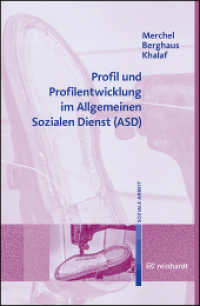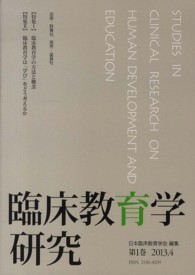- ホーム
- > 洋書
- > ドイツ書
- > Humanities, Arts & Music
- > History
Full Description
The armouries were among the most significant visual and symbolic manifestations of the nobility's elevated social position, alongside palaces, chapels, cabinet rooms, and libraries. The study of Aristocratic Culture necessitates a focus on arms, reflecting the nobility's traditional military function. Beyond the topic of arms and letters, understanding this distinct culture requires examining armouries as a critical interpretative key to social order and status. These served as demonstrations of a lineage's antiquity, prestige, importance, and worth, playing a vital role in the visual performance of this dominant social stratum. This collection of essays provides the first panoramic view of this subject, developed within the Spanish and broader European contexts, addressing the content, uses, formation, chronology, meaning, and significance of such sets of objects.
Contents
Table of contents - Hispanic Noble Armouries: Forms, Meanings and Overview - Spanish Noble Armouries in the Modern Age: Typologies and Legacies - The Architecture for the Armouries in Spain in the Early Modern Age - Contextualization of Noble Spanish Armories from a Broader European Perspective: The Case of Armory of the Dukes of Pfalz-Neuburg at Neuburg Castle on the Danube - The Armoury of Teodósio I, 5th Duke of Bragança - The Armoury of The Counts of Benavente - Arms in the House of Alba: a Brief Story of Functionalism - The Armoury of the Constables of Castile: a Representative Example of a Seventeenth-Century Noble Castilian Armoury - Around the Year 1600: the Medinaceli and Lerma Armouries - Noble Arms and Armouries in Hispanic America: Image, Collection, and Society - Spanish Noble Armories in American Museums and the Case of Dos Aguas - The Kernoozer's Club and the Establishment of the Instituto de Valencia de Don Juan - Documentary Appendix








